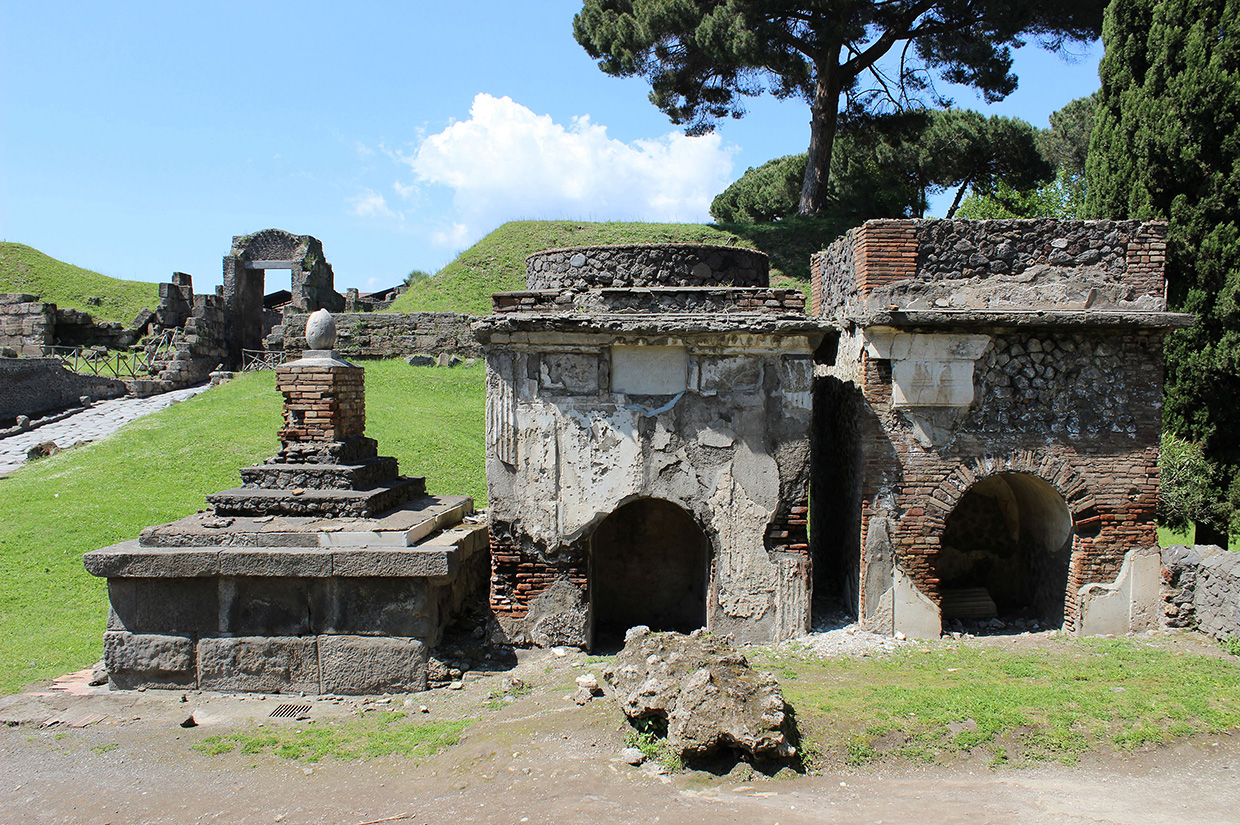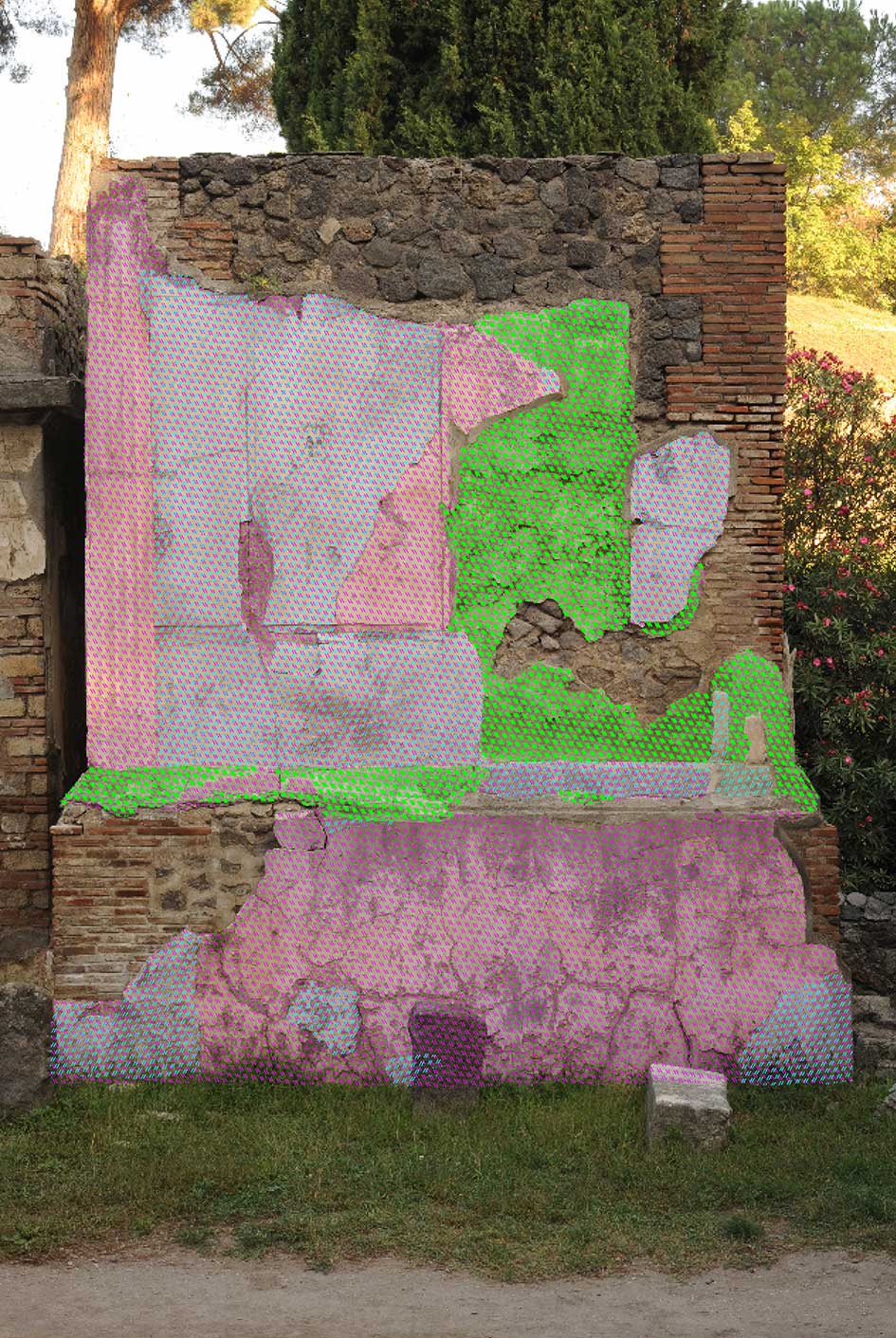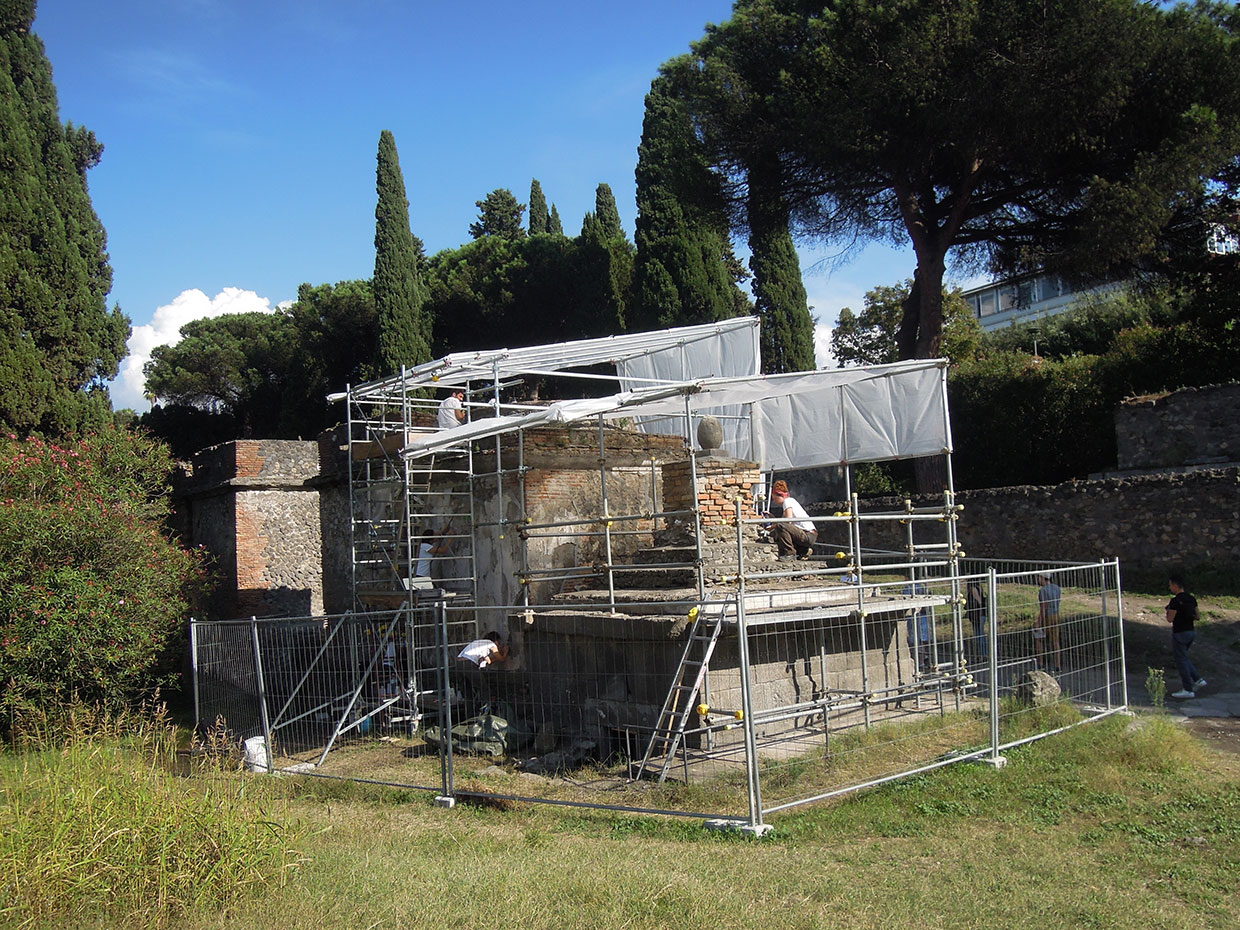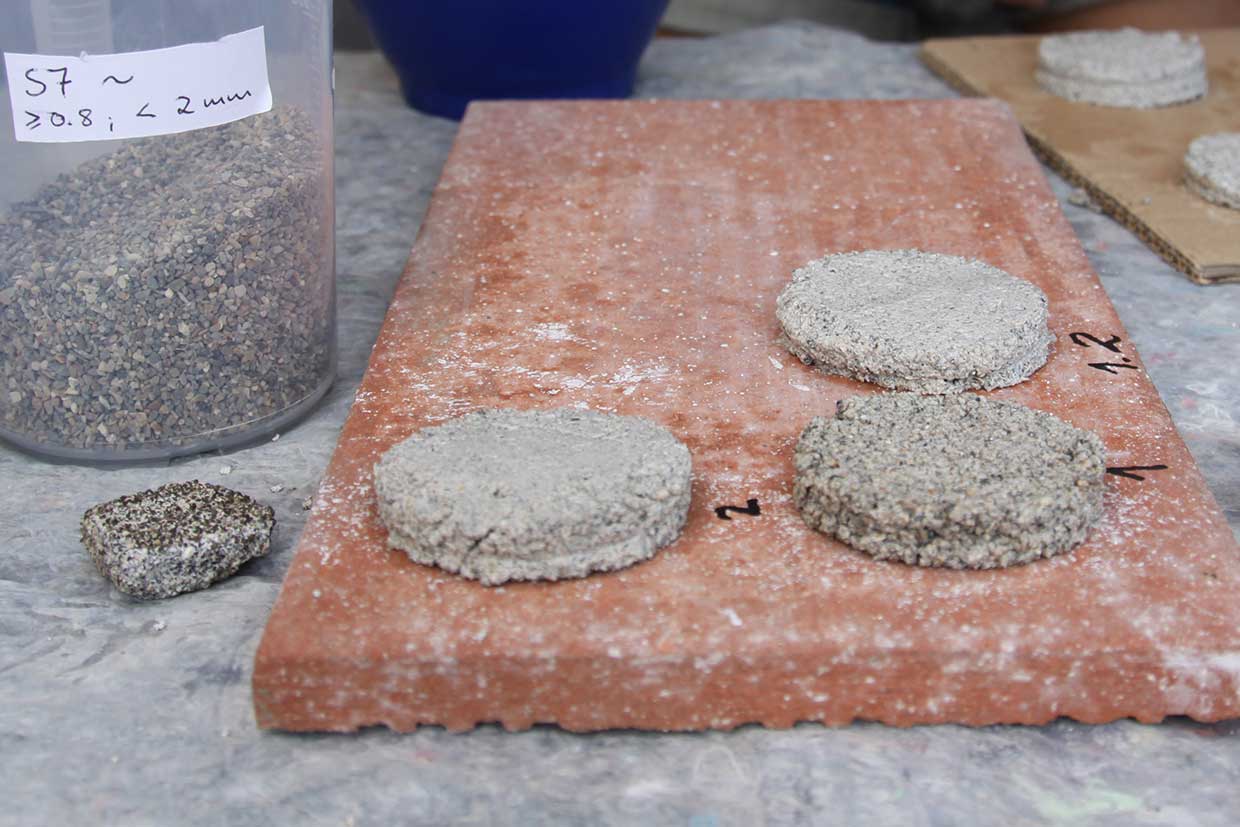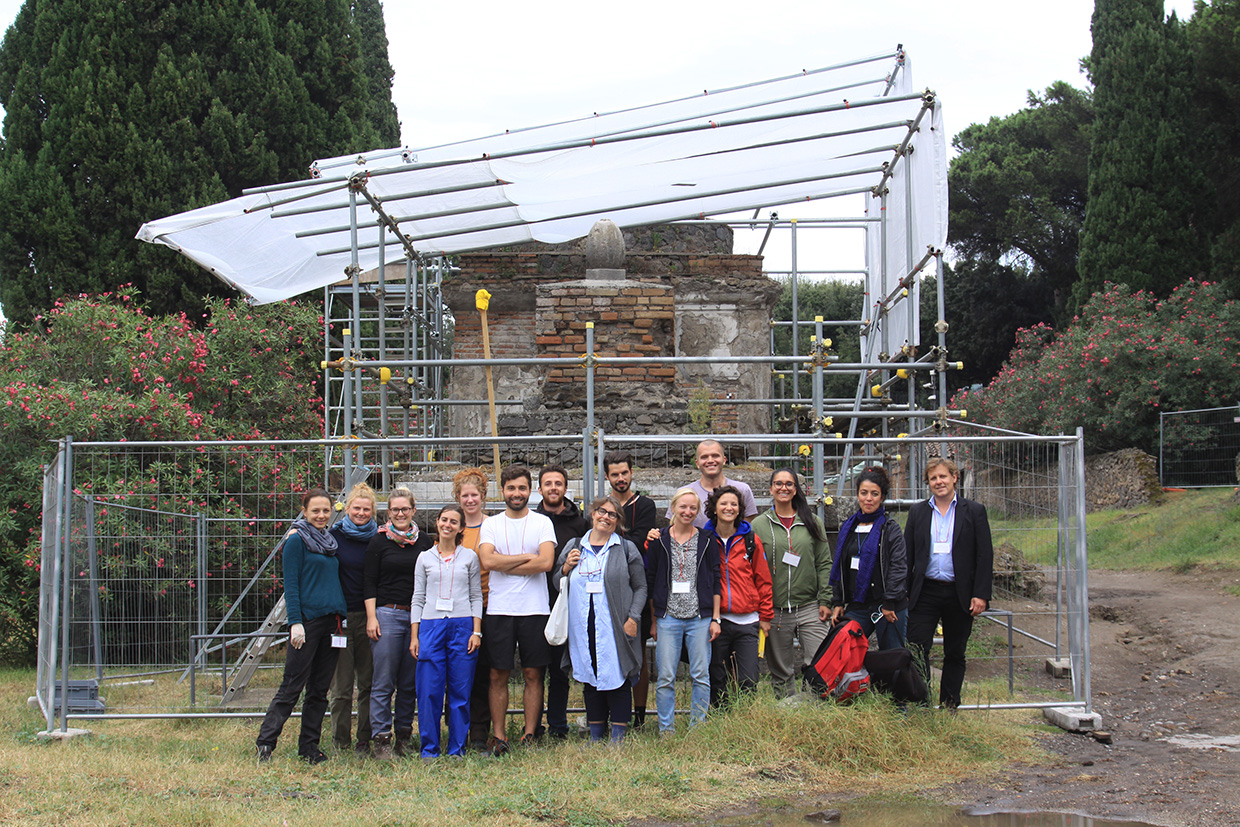The long-term preservation of exceptionally valuable historical sites is one of the great challenges of our time. Pompeii, the best preserved ancient city in the world, has a very rich architectural and cultural heritage, the preservation of which faces special challenges.
Launched in 2012, the POMPEII SUSTAINABLE PRESERVATION PROJECT (PSPP) is an association of renowned research institutions from the fields of monument preservation and restoration (including PAP, ICCROM, IBAM-CNR) under the direction of the Fraunhofer-Gesellschaft. The project is actively supported by a number of other major institutions and associations. It is a research association under German law and based at the Fraunhofer Institute for Building Physics IBP. The core areas of the project include training and research associated with the preservation of archaeological sites.
Since 2014, the project has been conducting research and restoration work on burial monuments in the necropolis in front of Porta Nocera. The methods, skills and knowledge developed here can be transferred to historical sites worthy of protection throughout the world.
The POMPEII SUSTAINABLE PRESERVATION PROJECT is financed by fund raising campaigns and donations.
